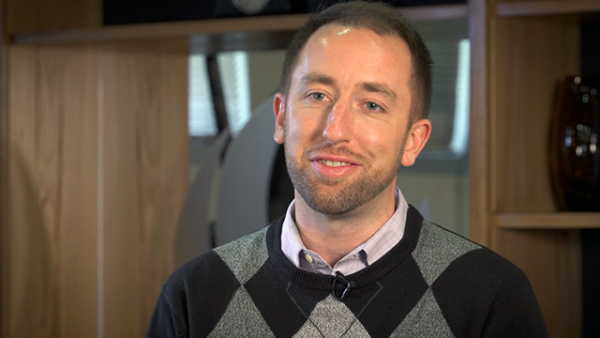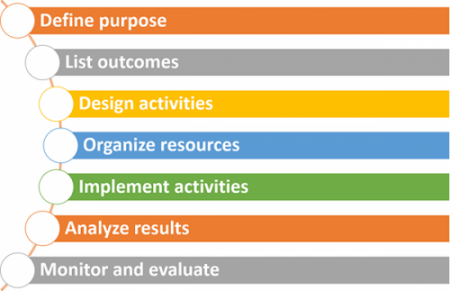Bringing TOPkit Digest to You
|
|
Contents of this Digest:
- Video Tip: Preparing to Teach Faculty About Copyright
- Announcement: TOPkit 2020 Workshop Registration and Proposal Submission
- Top Tips: Seven Steps to Alignment
- From the Community: Using a Course Map to Plan
- Top Community Topics
|
|
VIDEO TIP
|
Preparing to Teach Faculty About Copyright
|
|

|
|
James Paradiso, Instructional designer from the Center for Distributed Learning at Univeristy of Central Florida, talks about using available resources in preparing to teach online faculty about copyright issues.
|
|
MUST-READ ANNOUNCEMENT
TOPkit Workshop 2020 on March 4-5 in Orlando, FL:
Register now, submit a proposal to present an interactive session, sign up to be a proposal reviewer, or do any combination of these activities.
|
|
TOP TIPS
|
|
|

|
|
|
You are responsible for faculty development. How can you achieve success, or at least make continual progress toward success? How will you know if you are successful? When you align the components of your program and ensure they are coherent to form a unified whole, you have a framework to guide your program activities and to make informed decisions to make strategic changes to improve success. Below are seven steps to bring alignment and coherence into your faculty development program.
|
|
#1 - Define your purpose. Why does your institution need your faculty development program? How does your program help your institution achieve its purpose or goals? Articulate your program’s purpose and communicate it clearly but succinctly. Invite your stakeholders to be on board with your purpose
|
|
#2 - List your outcomes. What changes or impact will your program make? Make and review the list with stakeholders including leaders and program personnel. Do the outcomes align with your purpose to support and achieve it? Is your list complete? Do all stakeholders have a shared understanding of the outcomes? Are your outcomes achievable and measurable so that you'll know when you've achieved them?
|
|
#3 - Design your activities to achieve your outcomes. Map each activity to the outcome it is intended to support, and ensure each outcome has sufficient and appropriate activities to achieve it.
|
|
#4 - Organize the resources needed to achieve your outcomes. Funding, personnel, training, curricula, materials, technology, and space are all needed to carry out your activities. Ensure necessary resources are sufficient and appropriate to achieve the intended outcomes.
|
|
#5 - Carry out the activities with fidelity. Support and monitor implementation of program activities in relation to the outcomes.
|
|
#6 - Collect and analyze information about results. This information should address how the activities are achieving the intended outcomes and program's purpose. Use the results to determine needed adjustments to the activities to achieve the outcomes.
|
|
#7 - Monitor and evaluate overall results. Evaluate results in relation to the stated outcomes and purpose of the program. Use the insights gained to adjust resources or activities as needed to achieve the outcomes and fulfill the purpose of the program.
Roslyn Miller, Instructional Designer, Center for Distributed Learning, University of Central Florida
|
|
FROM THE COMMUNITY
|
Using a Course Map to Plan
|
 | |
Alignment of purpose, outcomes, content, activities, and evaluation are critical to successful teaching and training whether at the program, course, or module level. Allison Archer, an Instructional Designer formerly with the University of North Florida’s Center for Instruction and Research Technology, shared a Course Map template in the TOPkit Community of Practice where there are various faculty development resources. Instructional designers or teachers can use the Course Map to plan for alignment of objectives, content, activities, and assessments within a course. The map can also be useful then when evaluating the success of a course after it has been taught.
Allison Archer, Instructional Designer - Center for Instruction and Research Technology, University of North Florida
|
|
|
Content Coordinator and Contributor
Roslyn Miller, Instructional Designer, Center for Distributed Learning, University of Central Florida Editor
Bren Bedford, Web Project Analyst, Center for Distributed Learning, University of Central Florida
|
|
|




